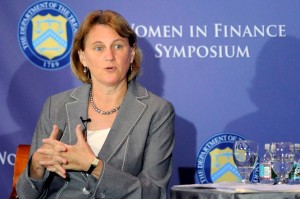
- CalPERS pays considerably less than “two and 20”
- Average management fee falls to 1.12 pct
- Carry and fees eat up more than one-third of PE’s gross return
The California Public Employees’ Retirement System obtained significant discounts in private equity management fees and carried interest in each of the last three fiscal years, according to documents released by the public pension.
General partners’ average share of investment profits fell from 16.92 percent to 14.8 percent between the 2012-2013 and 2014-2015 fiscal years. Investment-period management fees fell from 1.22 percent to 1.12 percent, according to pension documents.
The rates are significantly less than the “two and 20” model frequently touted as an industry standard, and “represent[s] a noteworthy achievement by CalPERS’ PE staff that will inevitably result in significant cost savings,” CalPERS consultant PCA wrote in a report.
However, CalPERS continues to face fierce criticism of its investments in private equity and other alternative investments. In April, staff conceded it did not know how much carried interest its investment managers carved out of its returns over the years.
While CalPERS has yet to disclose exactly how much carried interest its managers received, its November meeting materials indicate GPs took more than a third of the private equity program’s gross returns in the form of carry, fees and other expenses. The $295 billion pension netted a 12.3 percent return on a 19.3 percent gross return on a 20-year annualized basis.
The 7 percentage point spread for private equity is more than triple that of the pension’s next most expensive asset class, real estate, which netted 7.2 percent on a 9.31 percent gross return.
The issues surrounding private equity’s costs and the need for greater transparency have attracted considerable attention from politicians and industry observers. In October, California Treasurer and CalPERS board member John Chiang proposed a law requiring GPs to disclose any and all fee data to the state’s pensions.
Meanwhile, the Institutional Limited Partners Association is developing a standardized reporting template for carry, fees and expenses, an effort supported by CalPERS.
“PCA believes more dramatic, industry-wide changes to the relationship between managers and investors, while still greatly needed, are less likely to occur through CalPERS’ efforts alone, especially in times of strong investor demand for allocations,” the consultant wrote.
Fees fall
Documents released in advance of CalPERS’ November 16 meeting also detailed the private equity program’s annual expenses, which included external management fees.
Annual management fees fell from $441 million to $414 million year-over-year, but also gobbled up a higher percentage of the private equity program’s assets under management. External management fees cost CalPERS approximately 143 basis points of its private equity program’s AUM last year, compared to 140 basis points the year before.
The higher percentage cost is likely due to a reduction in CalPERS’ private equity AUM. The private equity portfolio shrank by almost 8 percent year-over-year, falling from $31.3 billion to $28.8 billion, according to CalPERS documents.
The declines could be due to the wave of distributions CalPERS received over the last half-decade. GP distributions to CalPERS outpaced capital calls by more than $21 billion between 2011 and June 30, 2015, according to the report.
At the same time, new commitments haven’t kept pace with those distributions. On average, CalPERS committed $3.4 billion per year between 2011 and 2014, compared to an annual average of more than $11.2 billion between 2006 and 2008.
Internal investment management costs rose slightly, from $7 million to $8 million, year-over-year. The program also paid another $7 million in technology and operating expenses last year, up $1 million from 2013-2014. The pension adopted a new private equity reporting system last year developed by Capital Analytics and eFront.
Action Item: See CalPERS’ report on fees, distributions and waterfalls here: http://bit.ly/1kKEVba



 If you do not receive this within five minutes, please try and sign in again. If the problem persists, please
email:
If you do not receive this within five minutes, please try and sign in again. If the problem persists, please
email: